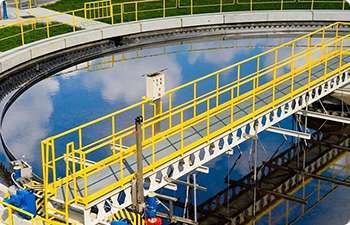How to purify seawater to produce drinking water?
Purifying seawater to produce drinking water (a process known as desalination) is widely practiced worldwide, especially in coastal areas with limited freshwater sources. The most common desalination methods, thermal distillation and reverse osmosis, yield ultra-pure water that requires re-mineralization for safe consumption.
The most common type of membrane separation is called reverse osmosis. Seawater is forced through a semipermeable membrane that separates salt from water. Because the technology typically requires less energy than thermal distillation, most new plants, like Tampa’s, now use reverse osmosis.
- The Process of Seawater Purification
Pre-treatment: Before the seawater enters the reverse osmosis system, it undergoes pre-treatment to remove larger particles, debris, and organic matter. This step helps prevent fouling and damage to the delicate membrane. - Pressurization and Filtration: The seawater is pressurized and forced through the semi-permeable membrane, which acts as a barrier to impurities. The membrane allows water molecules to pass through while blocking salts, minerals, and other contaminants.
- Product and Concentrate Streams: As the seawater passes through the membrane, it separates into two streams: the purified water, known as the product stream, and the concentrated brine, containing the rejected impurities.
- Post-treatment: The purified water undergoes post-treatment to adjust its pH, remineralize it, and ensure its quality meets regulatory standards for drinking water.
Benefits of Reverse Osmosis for Seawater Purification
- High Purity: Reverse osmosis technology produces water of exceptional purity, free from salts, minerals, and most contaminants, making it suitable for human consumption and various industrial applications.
- Energy Efficiency: Compared to traditional thermal distillation methods, reverse osmosis requires less energy, making it a more sustainable and cost-effective solution for seawater purification.
- Scalability: Reverse osmosis systems can be tailored to meet diverse water demands, from small-scale residential units to large industrial installations, offering flexibility and adaptability.
- Environmental Sustainability: By providing a viable alternative to depleting freshwater sources, reverse osmosis contributes to environmental conservation and sustainable water management.
Applications and Impact
The application of reverse osmosis technology for purifying seawater extends beyond addressing drinking water shortages. It plays a crucial role in various sectors, including:
- Residential and Commercial Use: Providing households, businesses, and communities in coastal areas with a reliable source of clean drinking water.
- Agriculture: Supporting irrigation and agricultural activities in regions with limited access to freshwater resources.
- Industrial Processes: Meeting the water needs of industries such as food and beverage, pharmaceuticals, and manufacturing, where high-purity water is essential.
However, this practice comes with challenges, including high energy costs due to the demanding nature of thermal and membrane separation processes. Additionally, the concentrated brine waste product presents disposal difficulties.
Credit: Peter Gleick; read more…


